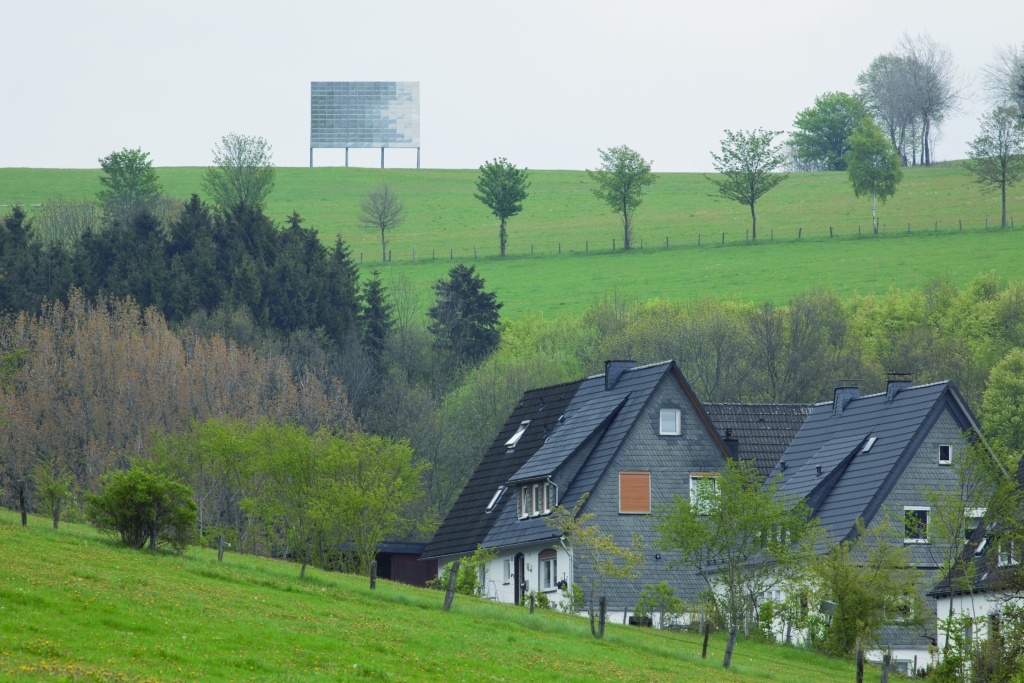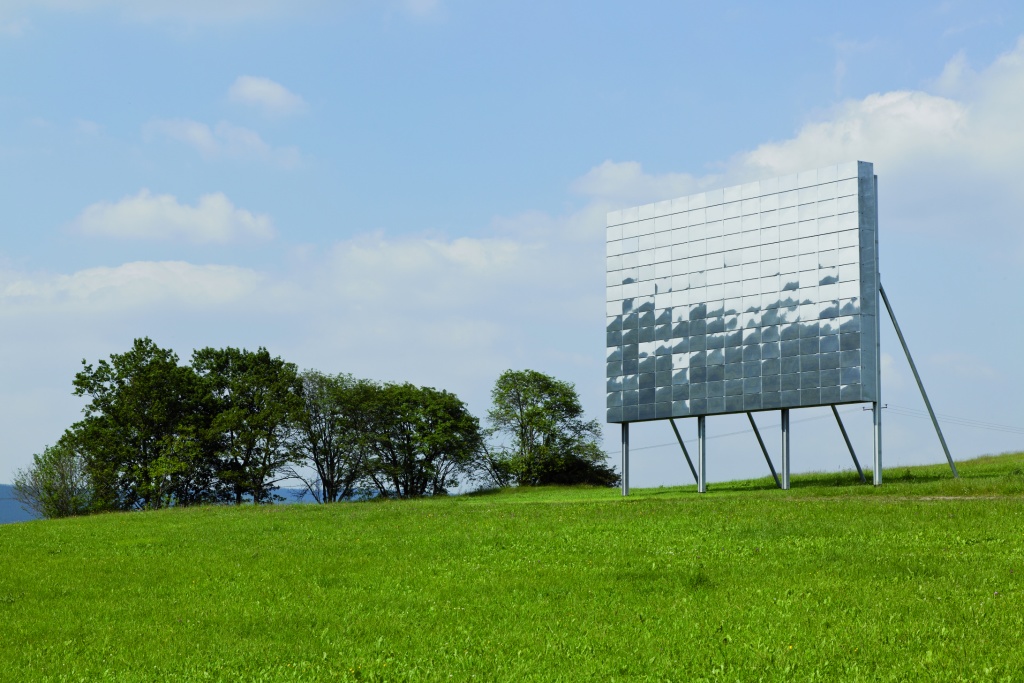Blinker II. Ein Lichtspieltheater / Blinker II. A Movie Theater.






Situated atop of grassy hill, Blinker II provides a projection surface where light and nature can put on their own show. Timm Ulrichs’s sculpture is constructed out of a steel frame with 196 movable polished stainless steel rectangular mirrors. Combined, these reflective surfaces form a large rectangular grid with the same dimensions as a movie screen.
Depending on the breeze, the individual mirrors sway and refract the light in different ways. The wind speed determines whether a pixelated but largely homogeneous image of the landscape and sky appears on the screen, or if it reflects a rapidly changing play of shape and color.
With this sculpture, Timm Ulrichs draws on two themes that are central to his work: The first is the notion of mirrors as symbolic of art itself. Much like art, they reflect existing situations and put them into new perspective. Mirrors are a motif in several of his works, such as Himmel auf Erden / Heaven on Earth, 1971–1978, Blinker, 1982.
The second recurring theme is the grid as a means of breaking down a whole into manageable parts. This makes the subject easier to perceive on a small scale and then assemble into an ordered structure. In turn, Blinker II can be seen as a reference to numerous considerations about art, nature, and human perception – or it can simply provide a unique cinematic experience that operates without any repetition.
Reference: www.waldskulpturenweg.de/skulpturen/blinker-2-ein-lichtspieltheater/die-skulptur/
Further reading : WaldSkulpturenWeg, ed. by the Arbeitsgemeinschaft WaldSkulpturenWeg, Texts by Uwe Rüth, Cologne 2011
Timm Ulrichs
← Zur Startseite
Schmallenberg, WaldSkulpturenWeg



